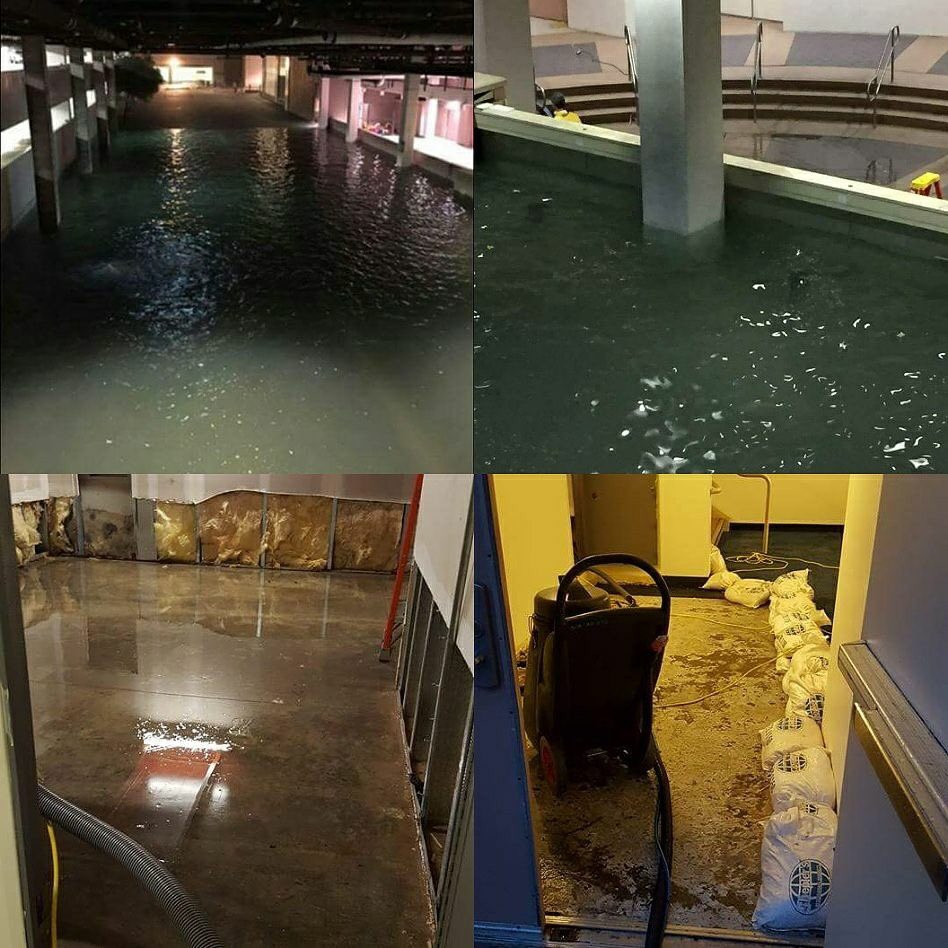Electronic Warfare Aircraft Contribute to Defeat ISIS
By Air Force Tech. Sgt. Jonathan Hehnly 386th Air Expeditionary Wing
SOUTHWEST ASIA, Aug. 31, 2017 — Often when people think about how air power is employed in the fight against the Islamic State of Iraq and Syria, thoughts may turn to cargo aircraft delivering critical supplies and personnel to the front lines or bombs being dropped on targets.

An EC-130H Compass Call electronic warfare aircraft receives maintenance in Southwest Asia, Aug. 29, 2017. Compass Call is an airborne tactical weapon system that uses noise jamming to disrupt enemy command-and-control communications and deny time-critical coordination essential for enemy force management. Air Force photo by Tech. Sgt. Jonathan Hehnly
Yet, the Air Force has the non-kinetic ability to disrupt enemy communications on the ground and therefore turn the tables on the battlefield.
The 386th Air Expeditionary Wing has the capability to deliver decisive airpower not only through its C-130 airlift mission, but through the highly sought after non-kinetic ability of the EC-130H Compass Call aircraft operated by the
43rd Expeditionary Electronic Combat Squadron. These heavily modified airframes are responsible for a highly specialized, unique mission: electronic warfare.
Precision Electronic Warfare Capability
“The mission of the 43rd EECS is to deliver precision electronic attack effects to deny or degrade enemy command and control, protect friendly forces and to achieve the combatant commander’s objectives to defeat our adversaries anytime, anywhere in the joint operations area,” said Air Force Capt. Joshua, a 43rd EECS electronic warfare officer.
The Compass Call aircraft is an airborne tactical weapon system that uses noise jamming to disrupt enemy command-and-control communications and deny time-critical coordination essential for enemy force management.
“The 43rd EECS provides the Combined Forces Air Component commander, or CFACC, with a critical non-kinetic option,” said Air Force Lt. Col. Matthew Cunningham, an EC-130H aircraft commander. “EC-130H employment of airborne electronic attacks functions as a force multiplier by degrading ISIS command and control. All military operations, to include those of our adversaries, require clear lines of communication between commanders and their forces. When we deny, disrupt or degrade these lines of communications, we reduce the adversary's battlefield effectiveness and give friendly forces a decisive advantage in individual engagements.”
EC-130H crews are currently performing tactical command, control and communications countermeasures in support of U.S. and coalition forces throughout the
U.S. Air Forces Central Command area of responsibility from the massive retaking of Mosul, Iraq to smaller, single-event missions, Joshua said.
The desired effects provided by the EC-130H’s unique communications jamming capability make the aircraft and its crew a low-density, high-demand asset in the
Operation Inherent Resolve battlespace. The autonomous electronic attack capability is unique to Compass Call aircraft and cannot be duplicated by any other airborne communications jamming assets.
“Compass Call is the Air Force's premier electronic attack platform,” Cunningham said. “It is the CFACC's only autonomous communications jamming, electronic attack asset. This unique autonomy is attributed to a crew of about a dozen highly-specialized, competent airmen.”
Team Effort
The EC-130H’s flight deck personnel responsible for the aircraft’s flight and navigation are the same as found in most C-130 variants. In the back of the aircraft, however, are a number of linguists actively monitoring ISIS communications, while electronic warfare officers, or EWO, simultaneously employ the Compass Call’s electronic attack weapons system. The EWO, serving as the mission crew commander, acts as the conduit between the partner forces on the ground and the mission crew to ensure the right effects are being placed on the right targets at the right time.
Because the EC-130H aircraft requires unique and specialized maintenance support to keep the aircraft and weapon systems mission ready, maintenance airmen from
Davis-Monthan Air Force Base, Arizona, deploy with the Compass Call aircraft and aircrews.
“Operations and maintenance work together at home station and we fight together in support of Combined Joint Task Force Operation Inherent Resolve,” Cunningham said. “They are a valued and integral part of our 43rd EECS team. We do not fly our mission without our maintainers’ dedication and effort.”
This non-kinetic capability allows the Air Force to reshape the combat environment by injecting unforeseeable command-and-control challenges on adversaries and dominating the electromagnetic spectrum, which in turn, enables joint and coalition military forces to seize initiative and dominate the battlefield.
“Non-kinetic warfare is, as the name implies, warfare without the utilization of kinetic resources such as missiles or bombs,” Joshua said. “The spectrum of non-kinetic warfare can include, but is not limited to, electronic attack, cyber operations and information operations. Non-kinetic warfare will continue to grow as we proceed into the future and face evolving and dynamic threats.”







 .
.